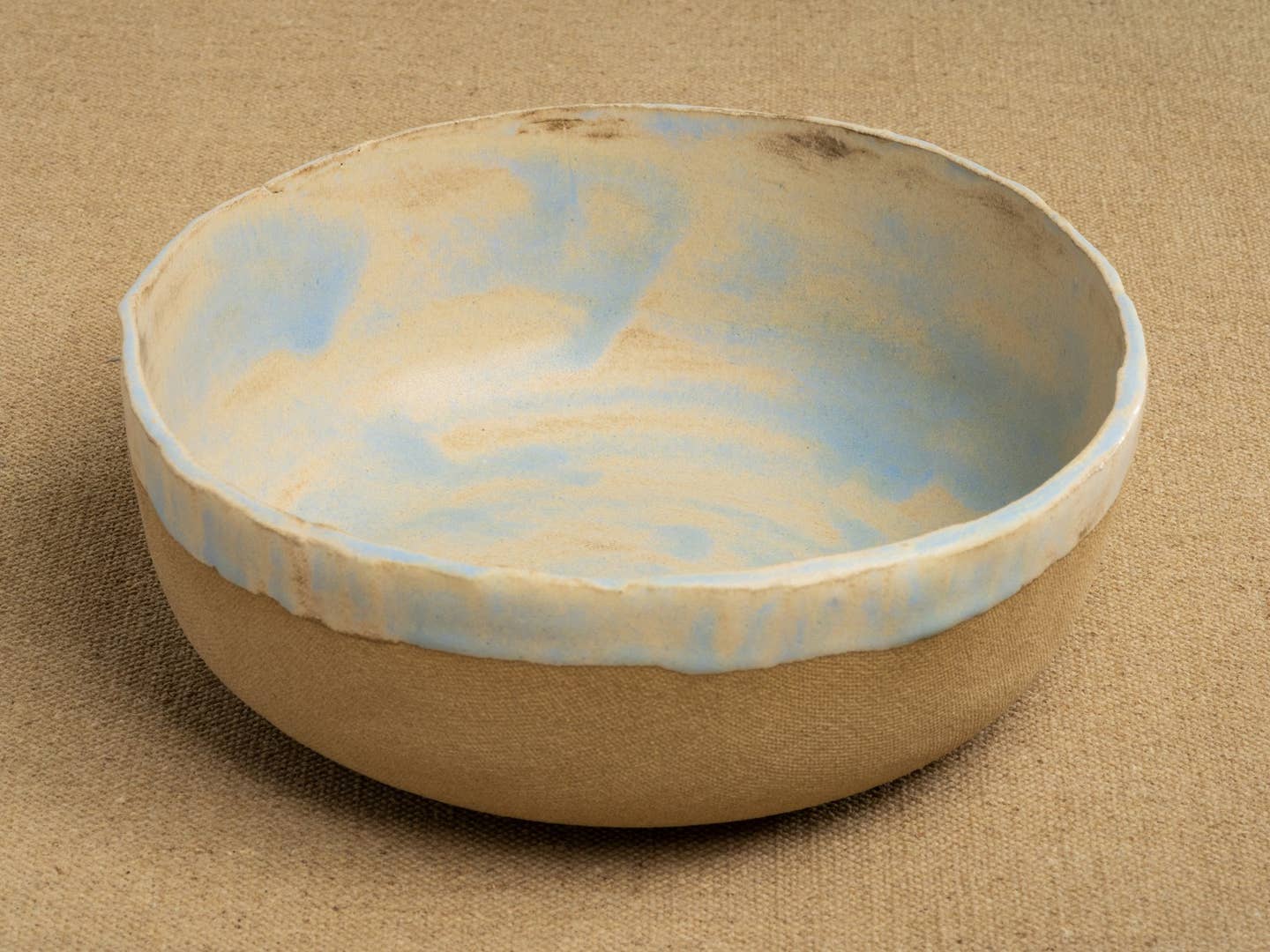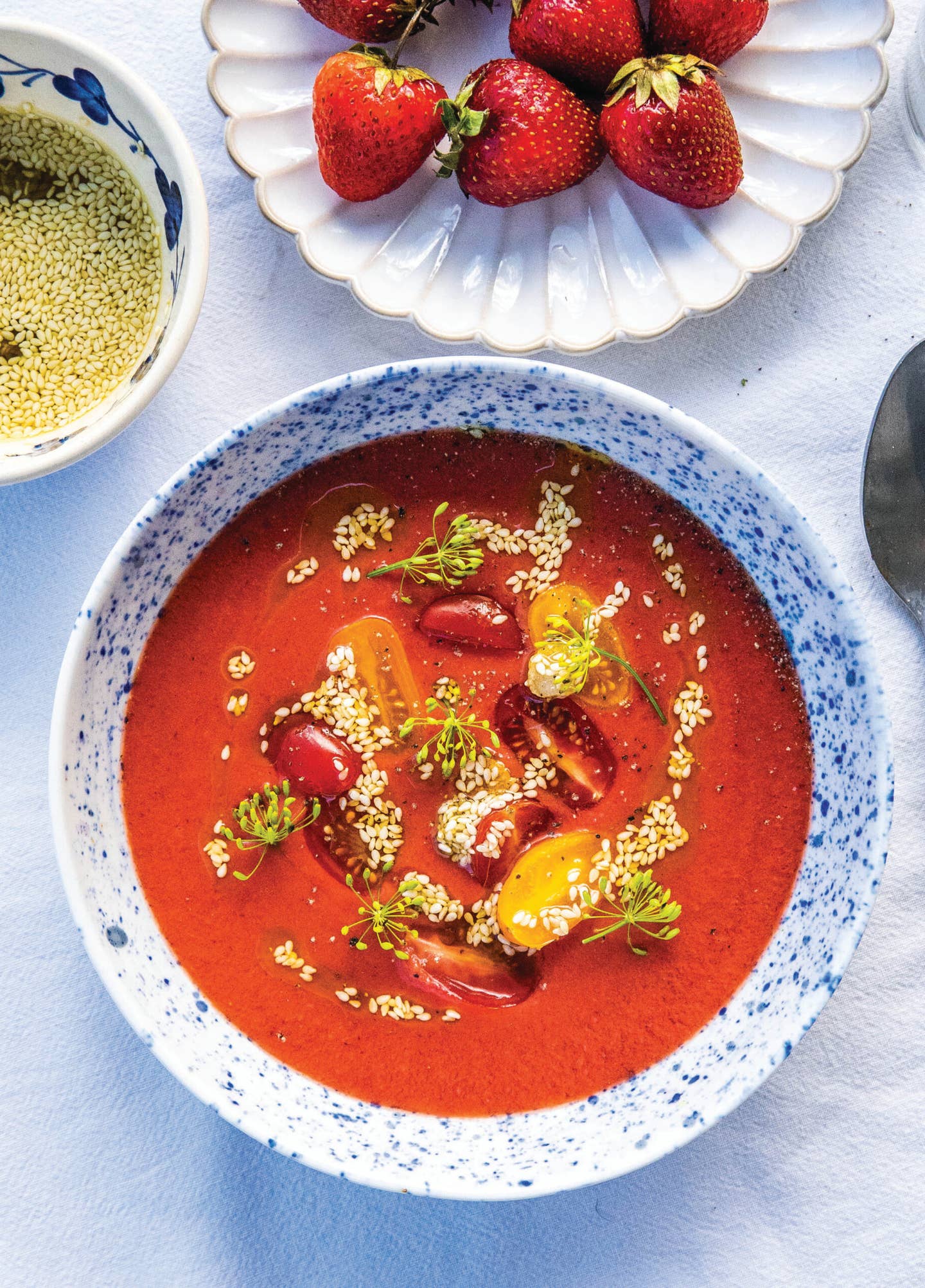
In Pottery, Women Parolees Find a Path Forward
At People’s Pottery Project, formerly incarcerated people learn the art of ceramics—and transition to life beyond bars.
Food is more than what’s on the plate. This is Equal Portions, a series by editor-at-large Shane Mitchell, investigating bigger issues and activism in the food world, and how a few good eggs are working to make it better for everyone.
“It's weird to put a real fork in my mouth,” says Susan Bustamente, while stacking footed oval platters at People’s Pottery Project (PPP), a ceramic collective in Los Angeles’ Glassell Park neighborhood. “Because we ate with plastic. If we were locked down, everything came in styrofoam trays. And it took a long time to not save a container with a lid, because it gave us something to eat out of rather than the little white bowl that you could buy in [the] canteen.”
Several days a week, the 66-year-old great-grandmother leaves before dawn to commute from San Gabriel Valley, where she now lives with extended family. She obtained her driver’s license three years ago, but still doesn’t feel comfortable navigating rush-hour traffic. At this early hour, the industrial warehouse turned studio space where she works is usually empty as she starts wedging clay and shaping ceramics that will be brushed with the collective’s distinctive “Abolition Blue” glaze.
A survivor of child molestation and domestic violence, Bustamente was the first woman to have her sentence commuted in 2017 from California Institution for Women, the state prison where she served 31 years of a sentence of life without parole. “It just empowers you to know that you're the only one that created this little bowl,” she says, cradling one in her arms. “It gives you a sense of accomplishment, especially when I had no clue, because being without parole, Life without parole? You don't even anticipate coming out to society.”
People’s Pottery Project was founded in 2019 by artist Molly Larkey, who has exhibited work at MoMA PS1, the Saatchi Gallery, and Crystal Bridges Museum of American Art. In 2016, she joined the California Coalition for Women Prisoners, a grassroots abolitionist organization that advocates for institutional change in the prison-industrial complex. She decided to open a ceramic studio in her own Los Angeles workspace as an artistic outreach project. “I had a kiln and a slab roller and one pottery wheel,” says Larkey. “A friend of a friend offered to teach a class once a week to formerly incarcerated folks from the community.”
Larkey explains that the next phase was to create a product to sell, so the studio began with a simple “hump mold” bowl, which is made by rolling out a slab of clay and then folding it by hand over a shape the artist likes. “You can even do this with a rolling pin, so it’s very accessible,” Larkey says. The handmade aspect, from the imprint of textured cloth holding the clay to the fingerprints of the potter, imbues each piece with singularity and humanity. “The energy of the person who made it is transferred to the person who then has the object and interacts with it,” she says.
Larkey presented these first bowls in a popup gallery at a ceramic art fair. Then she brought on Ilka Rosales Perkins and her wife Domonique Perkins as co-founders. “I wanted it to be a collective founded by people who had the experience and were directly impacted by incarceration.” Both served “extreme punishment” sentences. They were in the same prison with Bustamente and now live near her; Ilka and Domonique first encouraged her to start working with clay.
A study conducted by the Sentencing Project, a research and advocacy center that addresses racial disparities in the criminal justice system, found: “A disproportionate share of women of color received extreme punishments in response to homicides committed in order to escape domestic violence. The legal system has consistently failed to take their experiences into account. Imprisonment often exacerbates their trauma.” After Florida and Pennsylvania, California ranks third among states with the highest number of women serving this sentence. Transitioning to society after parole doesn’t always guarantee success, Larkey points out; it was important to her that every step of joining PPP, including on-the-job training, earns employees a living wage. Bustamente’s paycheck has helped her buy her first car.
“I'm used to working with my hands,” says Bustamente, who also advocates for Home Free and Survived + Punished, non-profit organizations that focus on the wellbeing of women parolees as they transition to life beyond bars. Having learned to crochet at age six, she made lap blankets for wheelchair-bound veterans after parole. And her ceramics, along with those made by other PPP craftspeople, are part of the tableware at Hatchet Hill restaurant, and displayed in the gift shop at the Los Angeles County Museum of Art.
“When you make something that you know somebody likes enough to buy and eat out of––compared to the store-bought stuff––to me, it's special,” she says.
For People’s Pottery Project, Bustamente is currently focused on shaping gravy boats with braided handles for Thanksgiving, a meal she looks forward to sharing with her family and friends. Bustamente is frank about surviving for decades on a prison diet, describing how women in her unit supplemented meals by purchasing Top ramen, peanut butter, and dehydrated beans. She says she’ll never eat Velveeta cheese again. But Bustamente is planning to have mashed potatoes and stuffing for the holidays. “It makes me sad that inside they don't have this pleasure.”
Please consider donating to Harvest Now, which creates grow-to-donate gardens within correctional facilities, and improves the wellbeing of inmates by providing fresh food for their own cafeterias.
Keep Reading
Continue to Next Story










